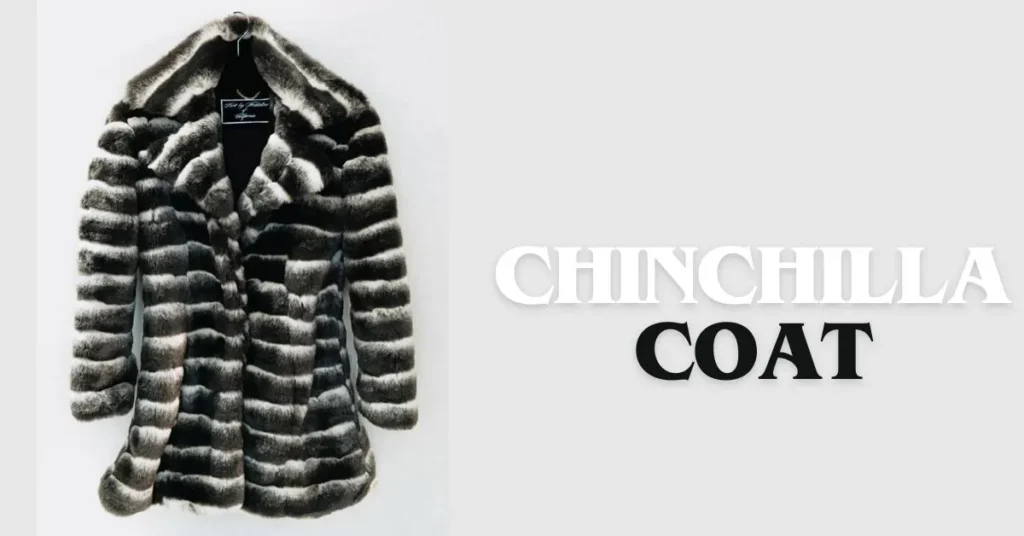When it comes to luxury fashion, few items are as coveted as a chinchilla coat. Known for its unparalleled softness and exquisite beauty, the chinchilla coat has long been a symbol of opulence. However, with rising concerns about animal welfare and ethical fashion, the landscape of chinchilla coats is evolving. This guide will explore everything you need to know about chinchilla coats, from their unique characteristics to ethical considerations and care tips.
What Makes a Chinchilla Coat Special?
A chinchilla coat stands out in the world of fur due to its unique properties. Chinchilla fur is incredibly dense, with each follicle containing up to 80 hairs, compared to the one hair per follicle in human hair. This density gives the fur its signature softness and plush feel. Additionally, chinchilla fur is known for its striking appearance, often showcasing a beautiful blend of silvery-grey and deep charcoal hues.
The lightweight nature of chinchilla fur also adds to its appeal. Despite its luxurious look, a chinchilla coat is surprisingly light, making it comfortable to wear for extended periods. This combination of lightness, warmth, and softness makes chinchilla coats a favorite among fashion enthusiasts seeking both style and comfort.
The History and Evolution of Chinchilla Coats:
Chinchilla fur has a rich history, dating back to the 16th century when Spanish conquistadors discovered the fur in South America. Initially, chinchilla fur was used by indigenous people, but its exceptional qualities soon caught the attention of European nobility. Over the centuries, chinchilla fur became synonymous with luxury and exclusivity.
However, the history of chinchilla coats is also marked by overhunting and near extinction of the species. By the early 20th century, chinchillas were on the brink of extinction in the wild. This led to the establishment of chinchilla farms, where the animals could be bred in controlled environments. Today, most chinchilla fur comes from these farms, though ethical concerns remain.
Ethical Considerations in Chinchilla Fur Production:
The production of chinchilla coats has raised significant ethical concerns. Animal rights activists highlight the cruelty involved in farming chinchillas for their fur. The conditions in which these animals are kept and the methods used to harvest their fur are often criticized for being inhumane.
In response to these concerns, the fashion industry is gradually shifting towards more ethical practices. Some brands have committed to using only ethically sourced fur, ensuring that the animals are treated humanely throughout their lives. Additionally, there is a growing market for faux chinchilla fur, offering a cruelty-free alternative that mimics the look and feel of real chinchilla fur.
How to Identify a High-Quality Chinchilla Coat:
If you’re considering investing in a chinchilla coat, it’s essential to know how to identify a high-quality piece. Here are some key factors to consider:
Fur Density and Softness: The density and softness of the fur are the primary indicators of quality. High-quality chinchilla fur should feel incredibly soft to the touch and have a dense, plush texture.
Color and Pattern: Look for coats with natural, vibrant colors. The fur should have a consistent pattern, with a smooth transition between shades of grey and black.
Craftsmanship: Examine the stitching and overall construction of the coat. High-quality chinchilla coats are meticulously crafted, with attention to detail in every seam.
Ethical Certification: If ethical considerations are important to you, check for certifications or assurances from the brand regarding humane practices in fur production.
Caring for Your Chinchilla Coat:
Owning a chinchilla coat is a significant investment, and proper care is essential to maintain its beauty and longevity. Here are some tips to help you care for your chinchilla coat:
Storage: Store your coat in a cool, dry place, preferably in a garment bag to protect it from dust and moths. Avoid hanging it in direct sunlight or damp areas.
Cleaning: Chinchilla fur is delicate and requires professional cleaning. Avoid attempting to clean it at home, as improper cleaning can damage the fur.
Handling: When wearing your coat, be mindful of rough surfaces that can snag the fur. Also, avoid applying perfumes or hairsprays directly onto the coat, as these substances can damage the fur.
Regular Maintenance: Periodically take your coat to a professional furrier for maintenance. They can inspect the fur for any signs of damage and perform necessary repairs to keep it in pristine condition.
The Rise of Faux Chinchilla Coats:
As awareness of animal welfare issues grows, faux fur has become a popular alternative. Faux chinchilla coats are designed to mimic the luxurious look and feel of real chinchilla fur, without the ethical concerns associated with animal fur.
Modern faux fur technology has advanced significantly, making it difficult to distinguish high-quality faux fur from the real thing. Faux chinchilla coats offer a cruelty-free option that is often more affordable and easier to care for than genuine fur. Plus, opting for faux fur aligns with a growing trend towards sustainable and ethical fashion choices.
Chinchilla Coats in Fashion History:
Chinchilla coats have made notable appearances in fashion history, worn by celebrities and style icons. From Hollywood starlets in the 1950s to modern-day fashionistas, the allure of a chinchilla coat has remained timeless. These coats have graced red carpets, fashion shows, and high-society events, symbolizing sophistication and elegance.
Fashion designers have also embraced chinchilla fur, incorporating it into their haute couture collections. The unique texture and coloration of chinchilla fur offer endless possibilities for creative expression, making it a favorite among designers seeking to make a statement.
The Future of Chinchilla Coats:
The future of chinchilla coats is likely to be shaped by evolving consumer preferences and advancements in technology. As more consumers prioritize ethical and sustainable fashion, the demand for faux fur alternatives will continue to grow. Additionally, improvements in faux fur technology will further bridge the gap between real and synthetic fur, offering high-quality options that are both luxurious and humane.
Brands that choose to continue using real chinchilla fur will need to adopt more transparent and ethical practices to meet the expectations of modern consumers. This may include better animal welfare standards, sustainable farming practices, and clear labeling to ensure buyers are informed about the origins of their fur.
Conclusion:
A chinchilla coat is more than just a piece of clothing; it is a symbol of luxury, history, and ethical consideration. Whether you choose genuine chinchilla fur or opt for a faux alternative, understanding the nuances of this luxurious item can help you make an informed decision. By considering factors like quality, craftsmanship, and ethical sourcing, you can find a chinchilla coat that aligns with your values and lifestyle. As fashion continues to evolve, the allure of the chinchilla coat remains timeless, blending elegance with a growing commitment to ethical and sustainable practices.







